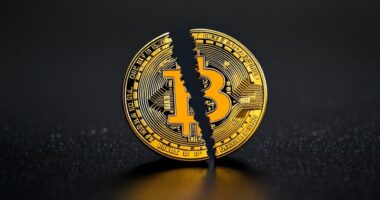Altcoins, or alternative cryptocurrencies, are the colorful cast of characters in the digital coin world, stepping in where Bitcoin leaves off. Think of them as the Swiss Army knives for various blockchain needs. From stablecoins that keep their cool during market storms to meme coins inspired by internet humor, altcoins cater to diverse interests. Some even let users shape their future through governance tokens! So, buckle up, as the wild world of altcoins is just warming up.

In the ever-evolving world of cryptocurrencies, altcoins have emerged as more than just sidekicks to the famed Bitcoin; they are the vibrant cast of characters in this digital drama. The term “altcoin” cleverly combines “alternative” and “coin,” signifying any cryptocurrency other than Bitcoin. Since the launch of the first altcoin, Namecoin, in 2011, the landscape has expanded dramatically, with over 20,000 altcoins now existing by 2025, each aiming to address specific limitations of Bitcoin.
Altcoins come in various flavors. Stablecoins are the dependable friends, pegged to fiat currencies or assets, offering stability in a volatile world. Utility tokens shine in specific ecosystems, while security tokens represent ownership of real-world assets—think of them as digital certificates. Then there are meme coins, the jokesters of the group, often driven by community enthusiasm rather than utility. Governance tokens, on the other hand, empower users to vote on project decisions, making them the democratic representatives in the crypto domain. Notably, Ethereum launched in 2015 as the first blockchain to support smart contracts, showcasing the innovative capabilities of altcoins. Additionally, Bitcoin is considered the largest cryptocurrency by market capitalization, serving as a benchmark for other cryptocurrencies.
Altcoins come in diverse forms, from stablecoins providing reliability to meme coins fueled by community spirit, enriching the crypto landscape.
Among the popular altcoins, Ethereum stands out with its robust smart contract capabilities, allowing complex agreements to be executed automatically. Binance Coin, native to the Binance exchange, and Cardano, known for its proof-of-stake blockchain, are also significant. Solana boasts high-speed, low-cost transactions, while XRP focuses on facilitating global payments quickly and affordably. Each altcoin serves unique use cases designed to solve specific problems in the cryptocurrency ecosystem.
Despite their potential, altcoins aren’t without risks. They can be more volatile than Bitcoin, leading to wild price swings. Regulatory uncertainties loom large, and the threat of scams, including infamous rug pulls, can leave unsuspecting investors in the lurch.
Technological vulnerabilities and limited liquidity for smaller altcoins add to the cautionary tale.
Frequently Asked Questions
What Are the Top Five Altcoins to Consider Investing In?
When considering investments in altcoins, five remarkable contenders emerge:
Ethereum (ETH) leads with its smart contracts;
XRP offers efficient cross-border payments;
Binance Coin (BNB) thrives within its exchange ecosystem;
Cardano (ADA) showcases a robust proof-of-stake platform;
and Solana (SOL) boasts impressive speed and scalability.
Each presents unique features, making them appealing options in the crypto landscape.
However, potential investors should always conduct thorough research before diving in.
How Do I Securely Store My Altcoins?
To securely store altcoins, individuals can consider hardware wallets, software wallets, or even the old-school paper wallet.
Think of hardware wallets as the Fort Knox of crypto storage—super secure but requires a bit of effort.
Software wallets offer convenience, like keeping snacks handy, but can be vulnerable.
Paper wallets are offline, making them hacker-proof, but don’t forget where you hid that!
Ultimately, a mix of methods can boost security and peace of mind.
Can Altcoins Be Mined Like Bitcoin?
Yes, many altcoins can indeed be mined, much like Bitcoin!
While Bitcoin uses Proof-of-Work (PoW), some altcoins employ different methods, like Proof-of-Stake, making the mining landscape quite diverse.
Think of it as a buffet of options—some coins can be mined with regular computers, while others need fancy hardware.
Mining profitability depends on factors like market value, electricity costs, and even the coin’s unique algorithms.
What Is the Role of Altcoins in Decentralized Finance (Defi)?
Altcoins play a vital role in decentralized finance (DeFi) by providing essential functions. They act like the trusty sidekick in a superhero movie, enabling liquidity for exchanges and serving as collateral in lending protocols.
Picture yield farming as a digital garden where users can grow returns, while governance tokens empower decision-making.
However, not all that glitters is gold; they also carry risks, from smart contract flaws to regulatory hurdles, making the DeFi landscape complex yet exciting.
How Do Altcoin Exchanges Differ From Bitcoin Exchanges?
Altcoin exchanges set themselves apart from Bitcoin exchanges by offering a wider selection of cryptocurrencies, including newer and niche projects.
Think of it like a candy store compared to a chocolate shop; the former has all sorts of sweet treats.
Additionally, these exchanges feature diverse trading pairs, advanced tools, and often lower fees.
However, they come with higher risks and volatility, like a rollercoaster ride—thrilling but not for the faint of heart!









